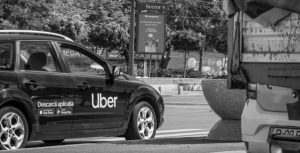Note: This article was originally published in Capitol Weekly.
With the pandemic finally abating, people are moving around more, and business is picking up for ride-hailing companies like Uber and Lyft.
So the timing is right for the California Air Resources Board to curb the pollution coming from those fleets. Fortunately, CARB’s agenda for its Board Hearing on Thursday includes a well-crafted measure called the Clean Miles Standard which will do just that.
The emissions savings from electrifying a ride-hailing vehicle are nearly three-times as high as they are for electrifying an average vehicle in California.
Research has found that the average ride-hailing trip currently produces 69% more greenhouse gas emissions than the trip it displaces, because drivers spend more than a third of their time cruising without riders and only rarely carry multiple riders.
In addition to planet-warming gases, ride-hailing also contributes to the ground-level pollution that makes California the smoggiest state in the country.
The good news is that electric vehicles, which emit no pollution from their tailpipes and are fueled by a power grid that gets cleaner all the time, are a great fit for drivers who spend a lot of time on the road.
The emissions savings from electrifying a ride-hailing vehicle are nearly three-times as high as they are for electrifying an average vehicle in California, and the fuel and maintenance costs saved by electric cars are magnified for high-mileage cars. The proposal before CARB will electrify most of the ride-hailing cars by 2030.
The Clean Miles Standard comes from a 2018 law authored by Sen. Nancy Skinner, and it received a big boost last year when Gov. Newsom ordered a transition to zero-emission transportation. This will be the first major transportation measure to come before CARB since Liane Randolph took the helm as Newsom’s appointed Chair.
Uber and Lyft have the resources to make the shift to clean cars – the Union of Concerned Scientists estimates it would cost companies less than 4 cents per mile — and they can help their drivers reap the substantial fuel and maintenance savings to be gained by replacing gasoline cars with electric vehicles.
CARB and the Public Utilities Commission, which is charged with enforcing the standard, should hold the companies responsible for delivering that aid to drivers.
One potential weakness in the CARB staff proposal is its slow ramp-up, as companies could meet the standard in early years simply through business as usual. Board members should pick up the pace and increase the chances that the car you step into in a few years might emit no tailpipe pollution.








